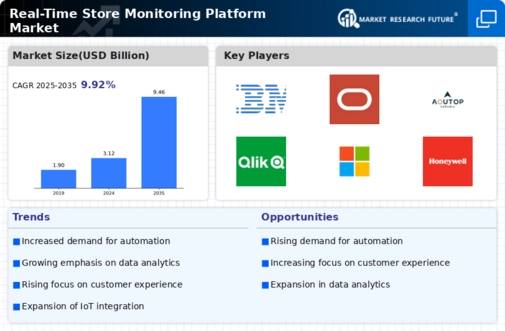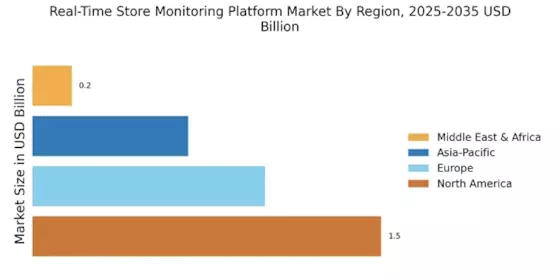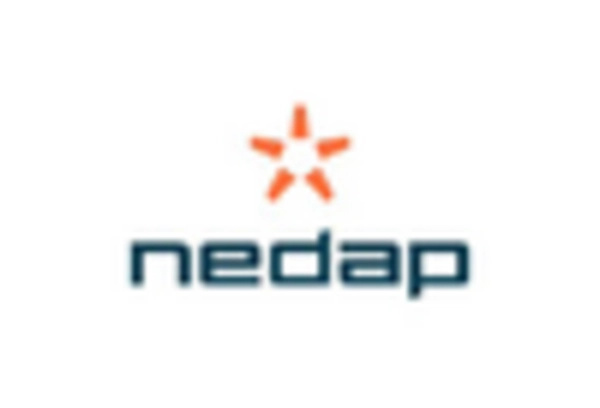Advancements in IoT Technology
The Real-Time Store Monitoring Platform Market is significantly influenced by advancements in Internet of Things (IoT) technology. The proliferation of IoT devices enables retailers to gather vast amounts of data from various sources, including sensors and smart shelves. This data can be analyzed in real-time to monitor store conditions, inventory levels, and customer engagement. The integration of IoT with monitoring platforms is expected to enhance operational capabilities and provide deeper insights into consumer behavior. Market forecasts suggest that the IoT in retail sector will reach a valuation of over 50 billion by 2026, indicating a strong correlation between IoT advancements and the growth of real-time monitoring solutions.
Rising Focus on Customer Experience
In the Real-Time Store Monitoring Platform Market, there is a notable emphasis on enhancing customer experience. Retailers are increasingly recognizing that understanding customer behavior in real-time can lead to improved service delivery and higher sales. By utilizing monitoring platforms, businesses can analyze customer interactions and preferences, allowing for personalized marketing strategies. This trend is supported by data indicating that companies that prioritize customer experience can achieve revenue growth rates of 4-8% above their market competitors. As a result, the integration of real-time monitoring solutions is becoming a strategic imperative for retailers aiming to foster customer loyalty and drive repeat business.
Growing Need for Compliance and Security
In the Real-Time Store Monitoring Platform Market, the growing need for compliance and security is becoming increasingly critical. Retailers are under pressure to adhere to various regulations regarding data protection and consumer privacy. Real-time monitoring platforms can assist in ensuring compliance by providing transparent data tracking and reporting capabilities. Furthermore, these platforms enhance security measures by enabling real-time surveillance and incident response. As regulatory frameworks evolve, the demand for solutions that can ensure compliance while safeguarding customer data is likely to rise. This trend suggests a potential increase in investment in monitoring technologies that prioritize security and compliance.
Shift Towards Data-Driven Decision Making
The Real-Time Store Monitoring Platform Market is witnessing a paradigm shift towards data-driven decision making. Retailers are increasingly leveraging data analytics to inform their strategies and operations. Real-time monitoring platforms provide critical insights that enable businesses to respond swiftly to market changes and consumer demands. This shift is supported by research indicating that organizations utilizing data-driven strategies are 5-6 times more likely to make faster decisions than their competitors. As the retail landscape becomes more competitive, the reliance on real-time data for strategic planning is expected to intensify, driving further adoption of monitoring platforms.
Increased Demand for Operational Efficiency
The Real-Time Store Monitoring Platform Market is experiencing a surge in demand for operational efficiency among retailers. As businesses strive to optimize their operations, the need for real-time data analytics becomes paramount. Retailers are increasingly adopting monitoring platforms to track inventory levels, customer footfall, and sales performance in real-time. This shift is driven by the desire to reduce operational costs and enhance customer satisfaction. According to recent estimates, the market for real-time monitoring solutions is projected to grow at a compound annual growth rate of approximately 15% over the next five years. This growth indicates a robust trend towards integrating advanced monitoring systems that provide actionable insights, thereby enabling retailers to make informed decisions swiftly.


















Leave a Comment